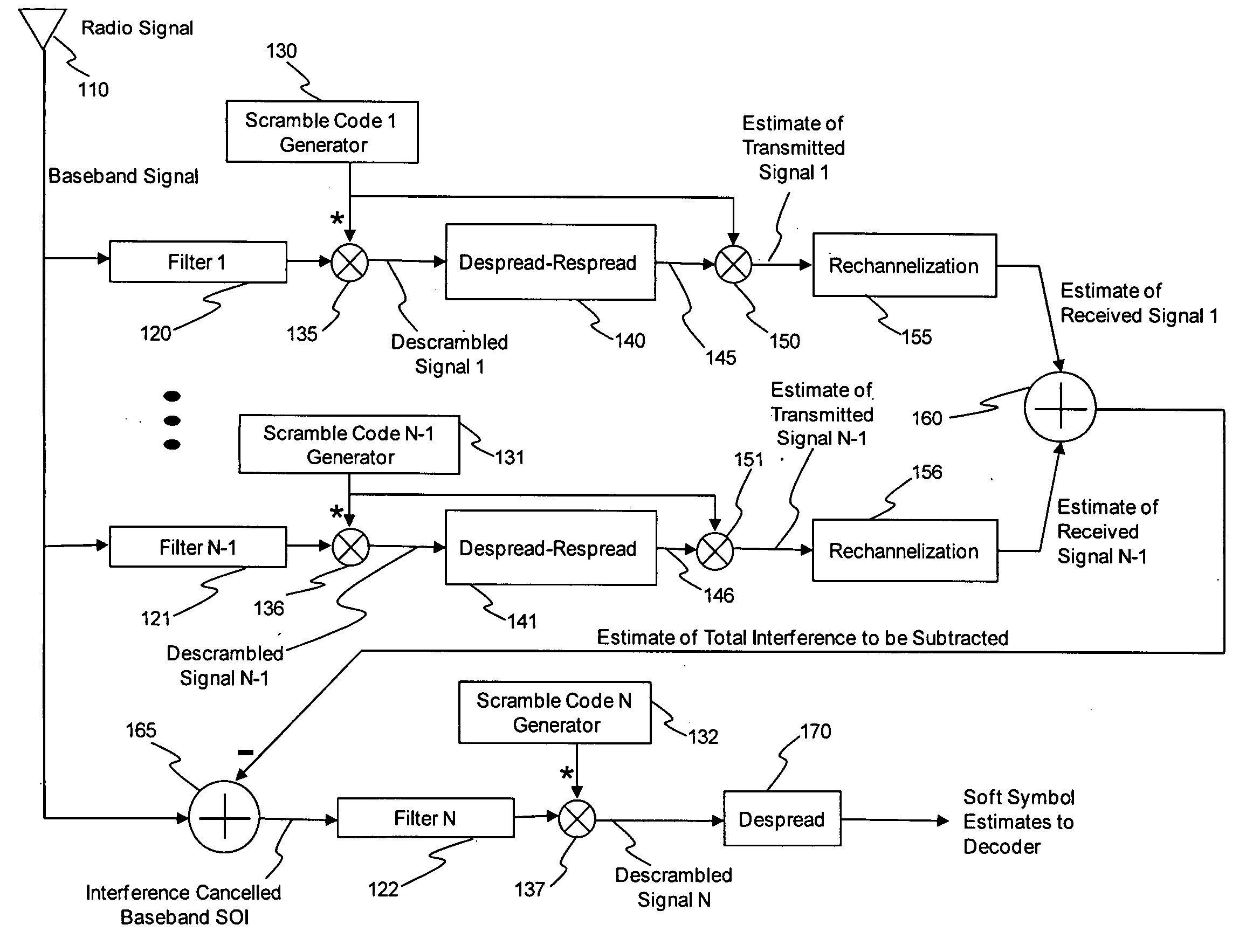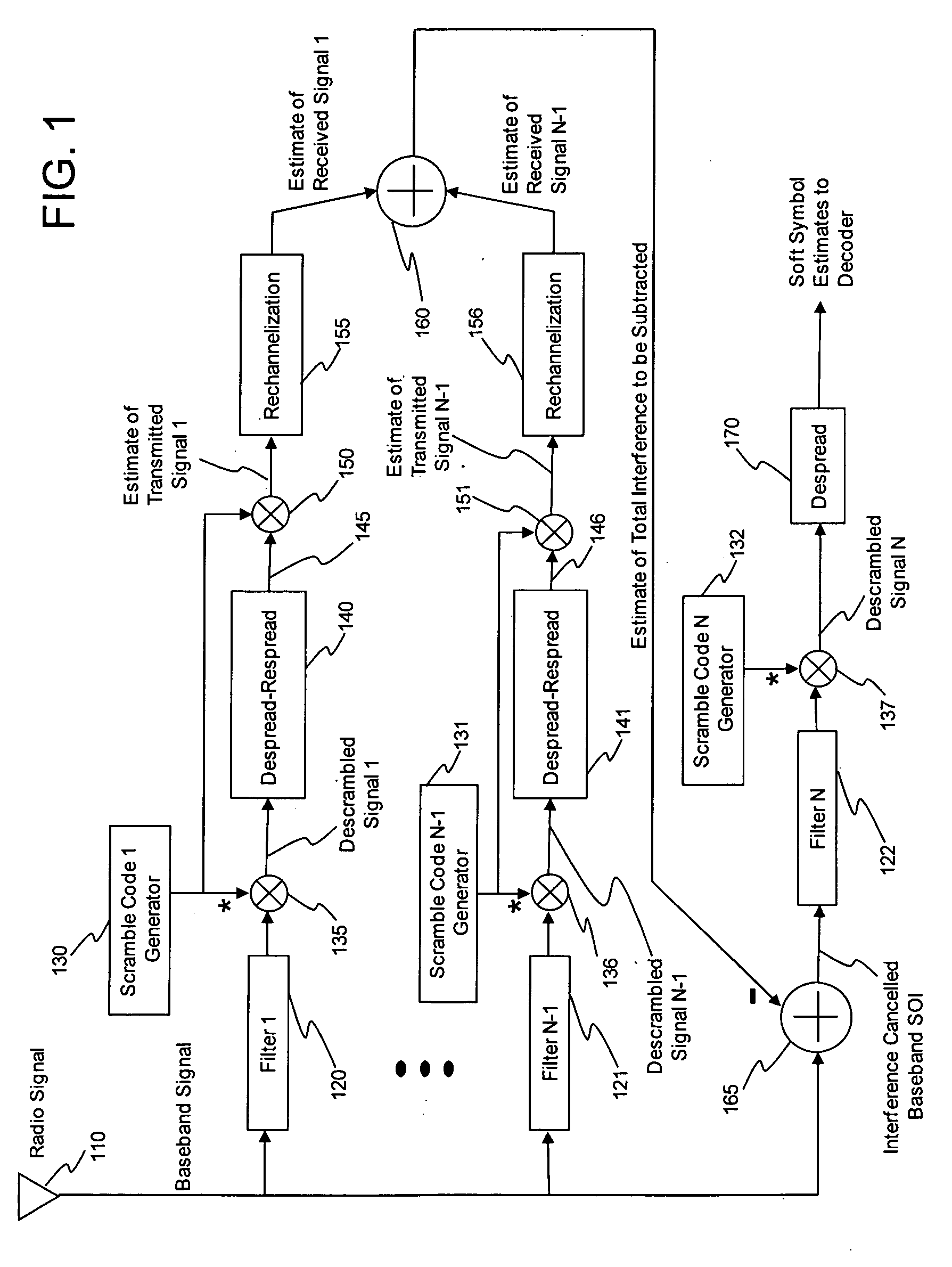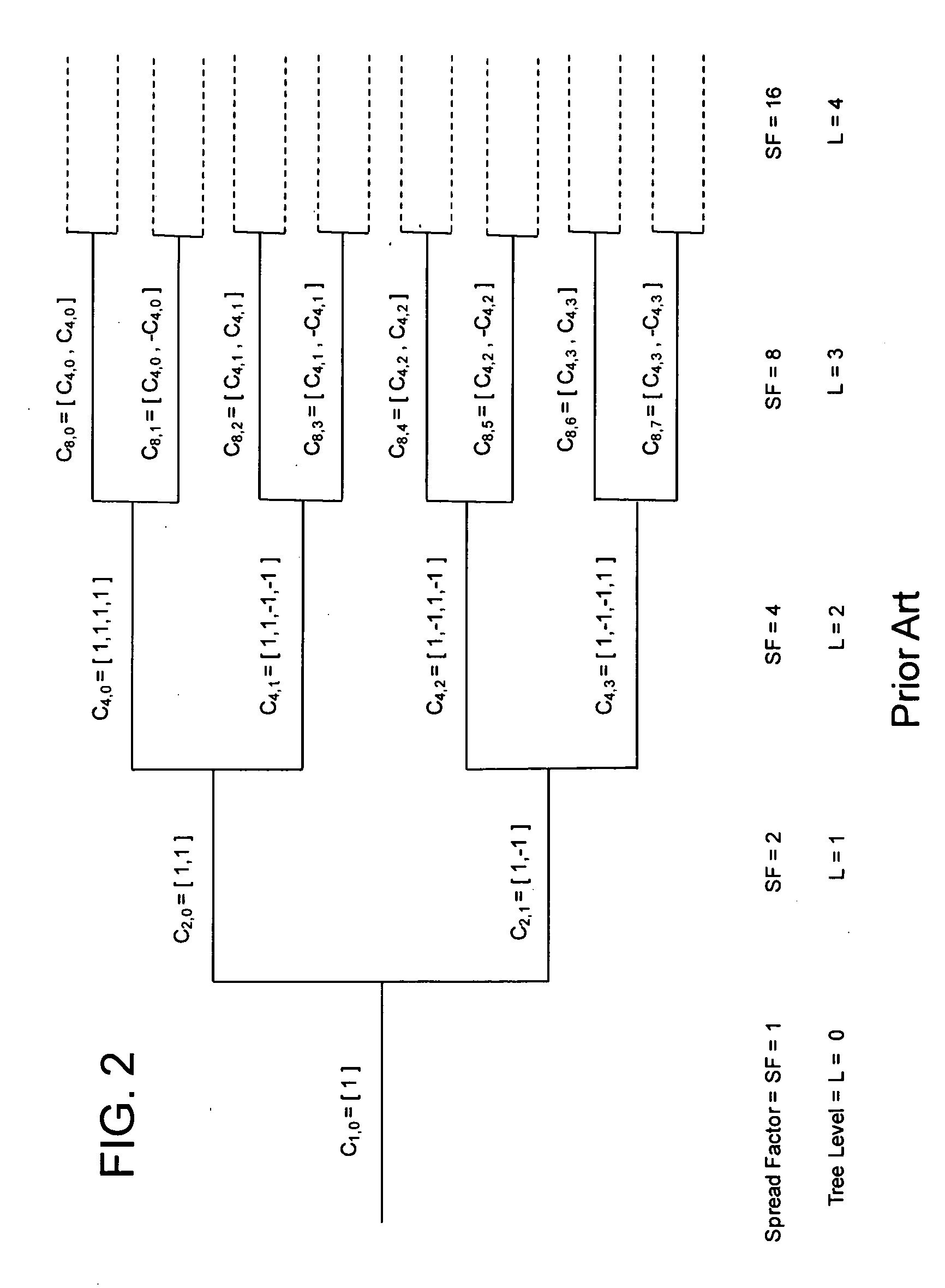Efficient Despread and Respread of Multi-rate CDMA Signals
a cdma signal and multi-rate technology, applied in the field of cdma communication systems, can solve the problems of rake receivers with performance degradation with increasing levels, unable to benefit from knowing the spread codes of individual user data channels, and unable to achieve the effects of reducing the performance of cdma receivers for individual user data channels
- Summary
- Abstract
- Description
- Claims
- Application Information
AI Technical Summary
Benefits of technology
Problems solved by technology
Method used
Image
Examples
Embodiment Construction
[0030]The present invention provides a module or system and a method of code despread, symbol decision, code respread and respread summation that can be used in a joint detection based interference cancellation receiver for CDMA signals. For convenience, the sequential combination of code despread, symbol decision, code respread and respread summation operations will be referred to here as a “Despread-Respread” operation. Each of the depicted and described modules of the present invention can be implemented in hardware, software or firmware or a combination thereof. The present invention is relevant to multi-rate CDMA communication systems where the spread codes used to channelize the individual user data streams are selected from an orthogonal variable spreading factor (OVSF) tree. For example, the Universal Mobile Telecommunications System (UMTS) family of network technical specifications includes the WCDMA, TD-CDMA, and TDS-CDMA designated air interfaces, all of which utilize the...
PUM
 Login to View More
Login to View More Abstract
Description
Claims
Application Information
 Login to View More
Login to View More - R&D
- Intellectual Property
- Life Sciences
- Materials
- Tech Scout
- Unparalleled Data Quality
- Higher Quality Content
- 60% Fewer Hallucinations
Browse by: Latest US Patents, China's latest patents, Technical Efficacy Thesaurus, Application Domain, Technology Topic, Popular Technical Reports.
© 2025 PatSnap. All rights reserved.Legal|Privacy policy|Modern Slavery Act Transparency Statement|Sitemap|About US| Contact US: help@patsnap.com



